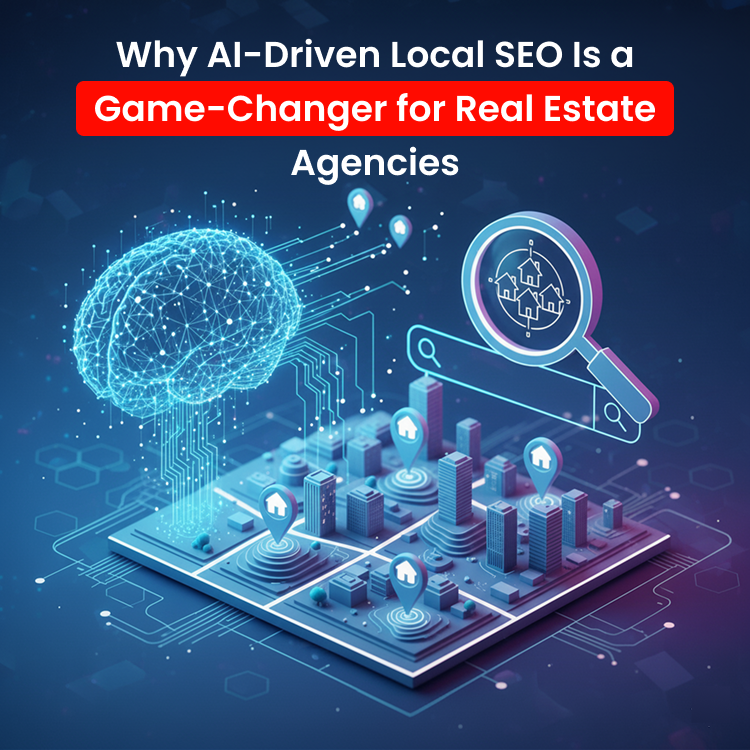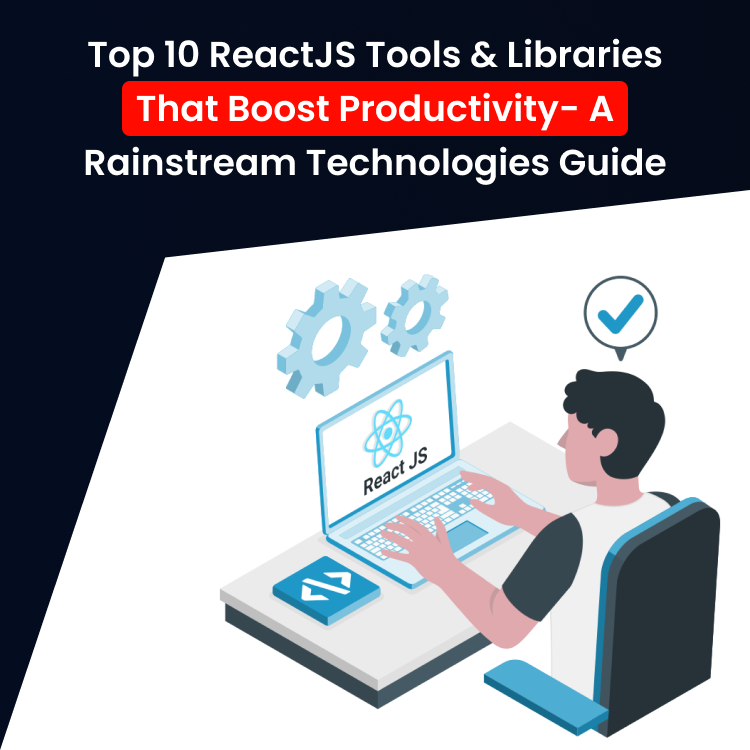

Real estate websites today face a very different audience than a decade ago. Most home buyers and sellers now browse listings on phones or tablets. In fact, recent studies show that over 60% of real estate website traffic comes from mobile devices.
Over 92% of Americans use smartphones, and spend around 5.2 hours a day browsing mobile applications on their mobile devices. A smartphone is basically the closest touchpoint that could initiate the customer journey. If you don’t have a real estate website that works seamlessly on mobile phones, then you could be losing valuable traffic and opportunity.
Google even uses the mobile version of a site for indexing and ranking. In other words, your site must look and work great on a phone first. Regardless, let’s understand in detail why mobile-first design is the go-to principle for most real estate websites.
What’s New in Real Estate Website Design?
The real estate industry is evolving fast, and your website needs to keep pace. From immersive property previews to intuitive search tools, today’s design trends prioritize user experience, speed, and engagement. Let’s understand what’s new and trending in real estate website design:
- Virtual and 3D Tours: Buyers now often walk through homes online. Many websites offer 3D or VR tours so people can explore a property from home. These tours attract much more interest, and one study found homes with 3D tours sell for about 9% higher prices.
- AI Chatbots and Personalization: Chatbots on real estate sites can answer questions and schedule tours at any time. The site can remember what kinds of homes a visitor likes and suggest similar ones, making browsing feel personal.
- AR, Photos, and Videos: Some sites use Augmented Reality so buyers can virtually place furniture or see renovations in a room. They also show high-quality photos, video tours, and even drone footage. Good images and videos keep visitors engaged, while poor ones can turn them away.
Clean, Simple Design: Many modern sites use uncluttered layouts with big images. A minimalist design (plenty of white space and easy menus) helps people find what they need quickly.
The Rise of Mobile-First in Real Estate Web Development
Mobile-first design is transforming real estate websites, making them faster, more responsive, and tailored to users on the go. Let’s understand how smartphone has become go-to device for a home search:
- Most Users on Mobile: Over 60% of real estate website visits now come from smartphones and tablets. Buyers often look at homes on the go, so your site must work well on a phone.
- Google Ranks Mobile Sites: Google mostly uses the mobile version of your site for search rankings. If your site isn’t mobile-friendly, you could lose visibility. Designing for mobile first (big tap targets, easy menus) keeps you high in search results.
- Speed is Critical: Mobile visitors are impatient. If a page takes more than 3 seconds to load, about 40% will leave. Compress images, use fast hosting, and enable caching so pages load quickly. A click-to-call button or short contact form on every mobile page helps capture leads before they leave.
Start your design on the phone layout. Make buttons large and navigation simple. Many real estate agencies also build mobile apps for saved searches and alerts. In summary, a mobile-first site (and app) keeps users engaged and boosts SEO.
Emerging Tech in Real Estate Web Development
Technology is pushing boundaries in real estate web development. From virtual tours to blockchain-based listings, innovative tools are redefining how buyers and sellers interact online.
- AI and Machine Learning: Websites can use AI to learn user behavior and suggest matching homes. About 28% of agencies already use AI/ML tools. AI can also predict market trends and automate reports for agents.
- Chatbots and Virtual Assistants: As mentioned, chatbots handle routine questions and appointments around the clock. They give instant answers and information, even when an agent isn’t online.
- Immersive Tours and AR: 3D virtual tours let buyers explore homes online. These tours generate far more inquiries (one report found about a 95% increase) and faster sales. AR tools let people virtually place furniture or see renovations in a property, making listings much more interactive.
- Drones and 5G: About 35% of agents use drones to take aerial photos and videos. With 5G networks (26% adoption), high-definition video tours stream smoothly on mobile devices.
Must-Have Features in a Modern Real Estate Website
If you are thinking about real estate web development, then it is essential to understand that the functionality and aesthetics of the website cannot be compromised because of one another. Here are some features that should be there:
- Responsive Design: The site should look and work great on all devices. Text and buttons must be easy to read and tap on a phone.
- Search and Filters: Include a prominent search box and filters (by location, price, bedrooms, etc.). Visitors should quickly find matching homes using keywords or sliders.
- High-Quality Media: Use sharp, professional photos for every listing. Add video or 3D tours if you can. Good images and videos keep people on your site longer.
- Lead Capture Tools: Make it easy to contact you. Include clear calls-to-action (like Contact Agent or Schedule a Tour) and simple contact forms or live chat on each page. Having email signup or click-to-call links helps turn visitors into leads.
- MLS/IDX Integration: Sync your site with the local MLS so listings update automatically. This ensures visitors see the latest homes on your site.
- Maps and Local Info: Embed maps on listing pages and share details about each neighborhood (schools, parks, shops). Buyers care about the community, and this information also boosts SEO.
Fast Performance and SEO: Optimize your site’s speed. Compress images and use caching so pages load in seconds. Use clear headings, meta tags, and schema markup (address, price, etc.) so search engines understand your content.
Custom vs Template-Based Web Development
If you’re short on time or money, templates are an easy fix. They already come with stuff like mobile-friendly design and basic SEO. But yeah, there’s a catch, your site might end up looking like dozens of others out there. If you’re okay with that, cool. If not, read on.
On the other hand, a custom site is built from the ground up for your brand. This is where things get serious (and a bit more expensive). You get a site that’s built just for you, your brand, your needs, your vibe. You can add whatever features you want. It takes longer and costs more, but the result feels more like you. Plus, if SEO matters to you (and it should), this route gives you more control.
Real Estate SEO Strategies That Work in 2025
Having a great website won’t matter if no one finds it. That’s where SEO comes in. Here are some SEO tips that a real estate website development service provider usually keeps in mind:
Local Keywords that Sound like People Talk: Nobody searches for real estate property. They search for stuff like a 2BHK in Bandra with parking. Use those. Be specific. That’s what shows up in local searches.
Mobile and Voice Matter More than Ever: People are talking to their phones, like hey Google, show me flats near me. So write like you’re answering that question. Keep it simple and to the point.
Technical SEO and Speed Need to be Perfect: If your site takes forever to load, people bounce. It is always better to test and fix those issues. Google cares about this more than it admits. A clear site structure and fast-loading pages improve SEO.
High-Quality Content Literally Works: Maintain a blog or news section with local market insights, neighborhood guides, and home-buying tips. In-depth, helpful articles attract readers and improve authority over time.
Backlinks and Local Citations also Matter: Get listed in local directories and earn links from reputable sites (local news, industry groups). These citations and backlinks act as votes of confidence that improve your site’s authority.
Monitor Issues and Adapt Changes: SEO is ongoing. Use Google Analytics and Search Console to track traffic, keywords, and errors. Update your content and strategy when algorithm changes occur.
How AI is Enhancing Real Estate Websites and Lead Generation
AI expedites the website development process, whether it is template development, coding, content creation, or building user personas. Let’s understand how AI-powered features can be used in real-estate website to improve their performance:
AI Chatbots: AI chatbots handle visitor questions instantly. They engage leads and gather contact info so that agents can focus on the most interested prospects.
Personalized Listings: AI can suggest properties similar to ones a user has viewed. For example, if someone looks at waterfront homes, the site will show them more waterfront listings first.
Content Automation: AI writing tools can draft listing descriptions and marketing text. Give them a home’s details, and they’ll generate a draft for you to edit. This saves time on content creation.
Lead Scoring: AI algorithms can rank leads by how likely they are to convert. Agents can see which inquiries are hottest and can follow up with those first.
The Future of Real Estate Web Development
Where is the industry headed next? As technology, user expectations, and digital marketing evolve, real estate websites will continue to adapt. Let’s understand the trends that will shape the future of real estate mobile app development services.
- Hyper-Personalization: AI will get even better at knowing what each buyer wants. Websites may soon understand you need a big yard and only show you those homes.
- IoT and Smart Homes: As houses add smart devices, websites may show live data (like energy usage or security status) from a property. You might see a digital twin of a home with its real-time stats.
- Blockchain and Automation: More transactions could use blockchain. Smart contracts might automatically finalize a sale once conditions are met. We may also see tokenized properties (selling shares of a home) listed online.
- Drones and Robotics: They will even speed up the process of creating and listing a home. Anticipate even more drone footage and speedy virtual tours to emerge as new homes are constructed.
- Sustainability: Green features will be emphasized more. Sites may display a home’s carbon footprint or solar savings. Web design itself can go green (dark mode, efficient code) and save energy.
Conclusion
A winning real estate website is mobile-first and tech-savvy. So, if you want to stay ahead in the market, first employ a fast, responsive design. Then, you must highlight homes with powerful photos, 3D/VR tours, or AR experiences.
Layer in intelligent tools such as AI chatbots and personalized recommendations. Combine these with targeted SEO (local keywords, schema, good content), and your site will be speaking to modern buyers.
Focus on the user: make your site fast, easy to use, and helpful on phones. Work with a professional developer, Rainstream Technologies, so that you can stay current with best practices. A mobile-friendly, easy-to-read site not only makes buyers happy but keeps you up in the Google search rankings. Adhering to these techniques will keep you in front of the competition in 2025.





